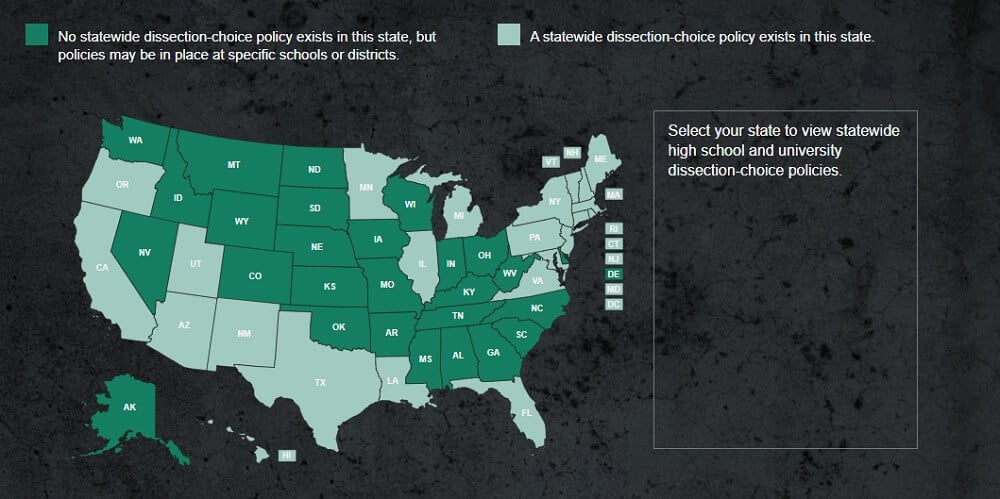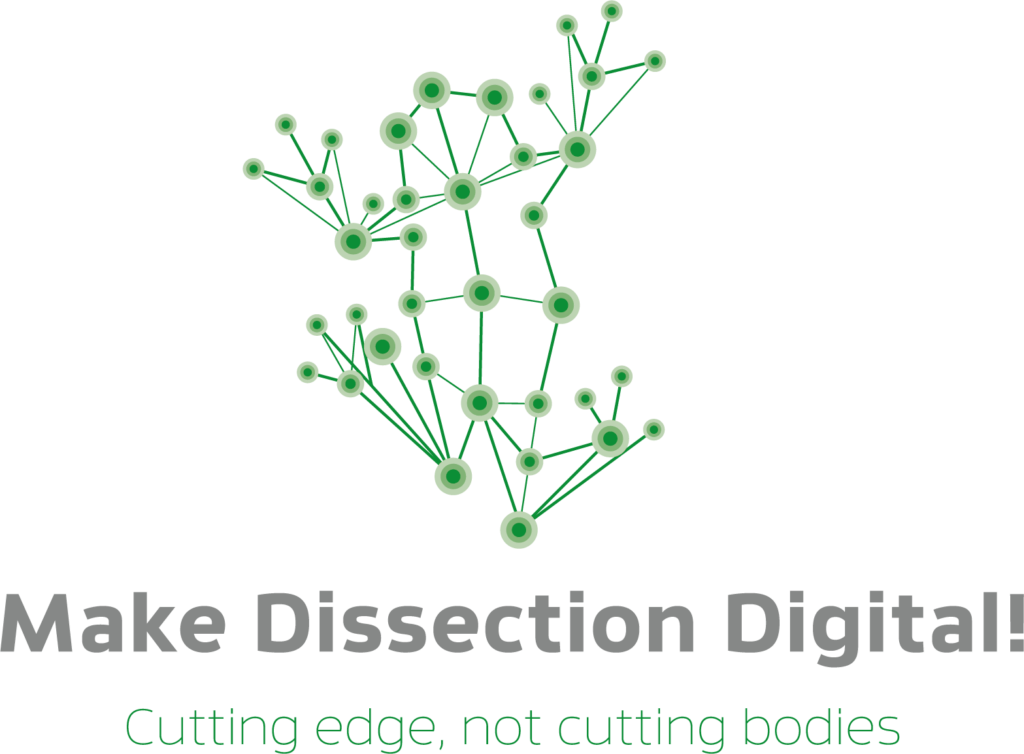
Whether you’re a parent, a teacher, or a student, you can help end cruel, archaic, and pointless dissection.
Dissection Is Dangerous, Unethical, and Unnecessary: Here's Why
Animal dissection is an archaic technique designed to explore anatomy—it’s from a time when humans knew very little about the insides of animals. Scientific discoveries advance our knowledge of the functioning of the natural world, but the practice of dissecting millions of animals every year hasn’t changed in a century. Advances in technology and an increasingly progressive understanding of animal sentience have exposed animal dissection as obsolete, dangerous, and unethical.
There’s no educational value in making students cut into animals’ corpses, but the many benefits of humane, non-animal instruction—such as digital dissection—are well documented. Dozens of peer-reviewed studies show that dissecting animals is bad science, whereas when students use modern methods, they learn faster and are able to repeat material until they’re proficient. Studies also show that students prefer using humane alternatives such as interactive simulations and anatomical models. Dissecting animals has been shown to dissuade some students—especially females—from entering science-related fields, and some are uncomfortable speaking up because of fears of potential ostracism from peers or teachers. A growing majority of young people are opposed to animal experimentation and dissection in educational settings. Many states have recognized students’ right to reject these lessons in cruelty by implementing dissection-choice laws and policies.

Having children cut an animal open—a misguided but sometimes sanctioned classroom activity—teaches them that living beings are disposable and downplays the fact that they were once alive and, in most cases, killed exclusively for these exercises. This is a very harmful lesson, especially considering the increase that we’re currently seeing in incidents of cruelty to animals perpetrated by juveniles and an epidemic of school bullying.
In addition to the dangers of desensitizing students to the suffering of living beings, animal dissection often exposes them to harmful chemicals, such as formaldehyde and formalin. Formaldehyde is used as a preservative and is also found in cigarette smoke—it’s classified as a human carcinogen, and repeated exposure to low levels may cause respiratory difficulty, eczema, and skin sensitization.
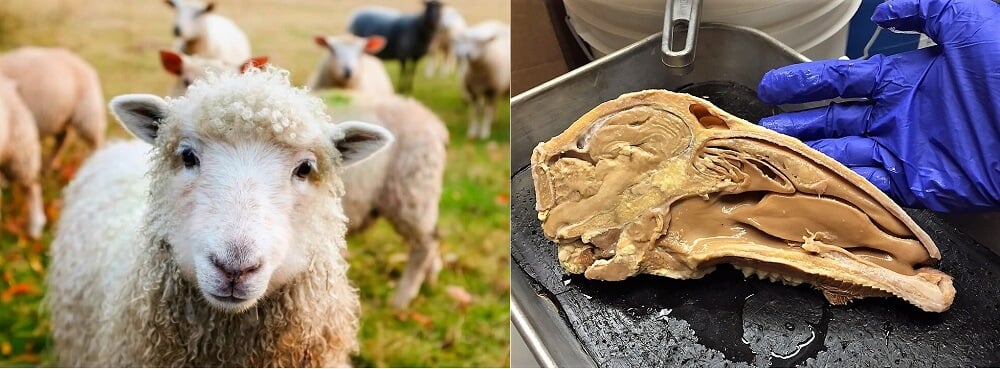
There's a Better Way: Modern Technology Exists to Replace Animal Dissection
Educators at all levels are increasingly choosing humane options to meet their students’ needs. These modern teaching methods—including interactive computer simulations and digital dissection apps—save animals’ lives, are suited to all students, cost less and are more effective than animal dissection, and can be used in remote learning.
 Live frog Image: FreeImages.com/Roberto Valdés | Cane Toad Dissection: | Rob and Stephanie Levy | CC by 2.0
Live frog Image: FreeImages.com/Roberto Valdés | Cane Toad Dissection: | Rob and Stephanie Levy | CC by 2.0Methods such as narrated software programs with physiology animations or clearly labeled anatomical models allow students to learn more efficiently, without being distracted by the shock of cutting up dead animals and the struggle to distinguish discolored body parts. Unlike animal dissection, in which each body system is ablated and displaced and must be discarded at the end of the lesson, digital dissection allows the systems to be studied and virtually dissected repeatedly until students feel confident with the material.
Here are a few digital dissection programs that are effective and highly interactive:
- Expandable Mind Software is a web-based suite of simulated dissections and physiology experiments that are highly interactive and aligned with the Next Generation Science Standards. Modules are available for purchase individually and include studies of Mendelian genetics and the anatomies of 10 different animals, including frogs, three types of fish, several invertebrate species, fetal pigs, and cats. Mini labs include various physiological simulations, such as respiratory rate, muscle contractions, and the effects of drugs on heart rate. The software may be accessed on any device with an internet connection.
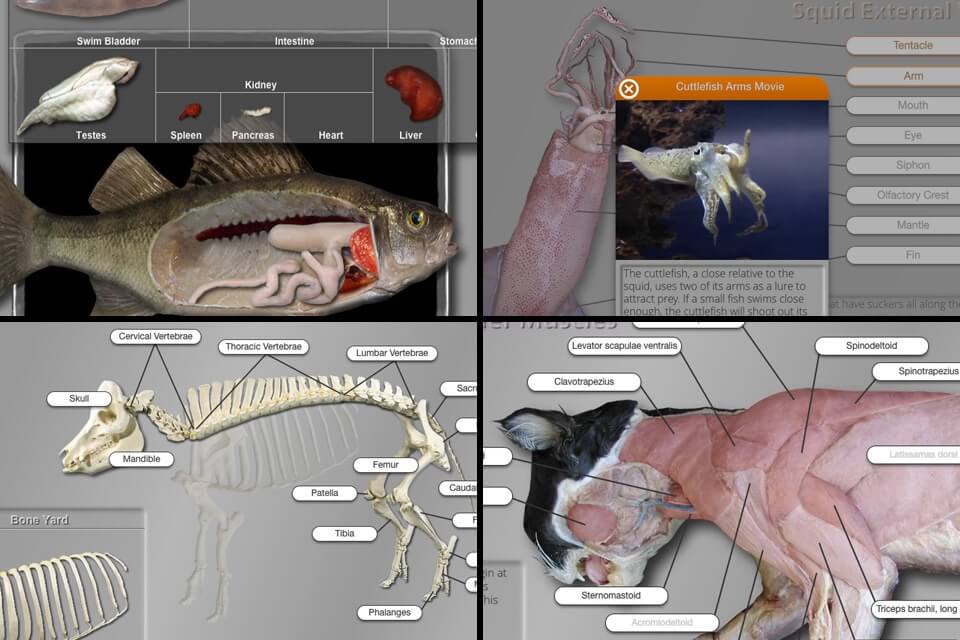
![]()
- Merge Labs, Inc., allows students to hold and interact with virtual objects—like human organs and frogs—for a safe, fun, kid-friendly experience. Paired with apps like Anatomy AR+ and Mr. Body, Merge Cubes come to life with high-quality virtual and augmented reality exploration of complex anatomical features. With Merge Explorer, students can virtually dissect a frog in 3-D.
- Digital Frog is a downloadable program that integrates comparative anatomy, frog dissection, and ecology. Students are able to review each body system with high-quality animations and digital dissection. In addition, Digital Frog offers a field trip series that includes unique desert, wetland, and rainforest instruction.
- Cogent Education boasts a suite of interactive case studies for biology, providing captivating scenarios that effectively engage students in their learning. Students play the role of a professional scientist tasked with solving a real-world problem. The modules cover topics such as homeostasis and action potential and are recommended for both beginning and advanced students. Shifting the focus from anatomy, the cases encourage students to view the organism as a whole while explaining detailed physiological processes in a unique and engaging way.
In need of a humane hands-on dissection option? Check out the state-of-the-art technology of SynFrog. This whole-body frog model accurately mimics living tissue (unlike preserved frogs) and includes external and internal anatomical landmarks in a realistic, dissectible figure.
Visit this page for more digital dissection resources.
How Teachers Can Help End Dissection
Rather than defaulting to crude and archaic animal dissection, educators are (and should be) seeking creative and inspired ways to teach biology in the modern era. Teachers are in a unique position to effect change both in their own classroom and throughout their school. Meeting curricular goals without harming animals is a win-win situation for students, teachers, and schools. Since many teachers and schools are going digital and offering remote learning options, there’s no better time than now to switch to efficacious and cruelty-free digital dissection software and apps.
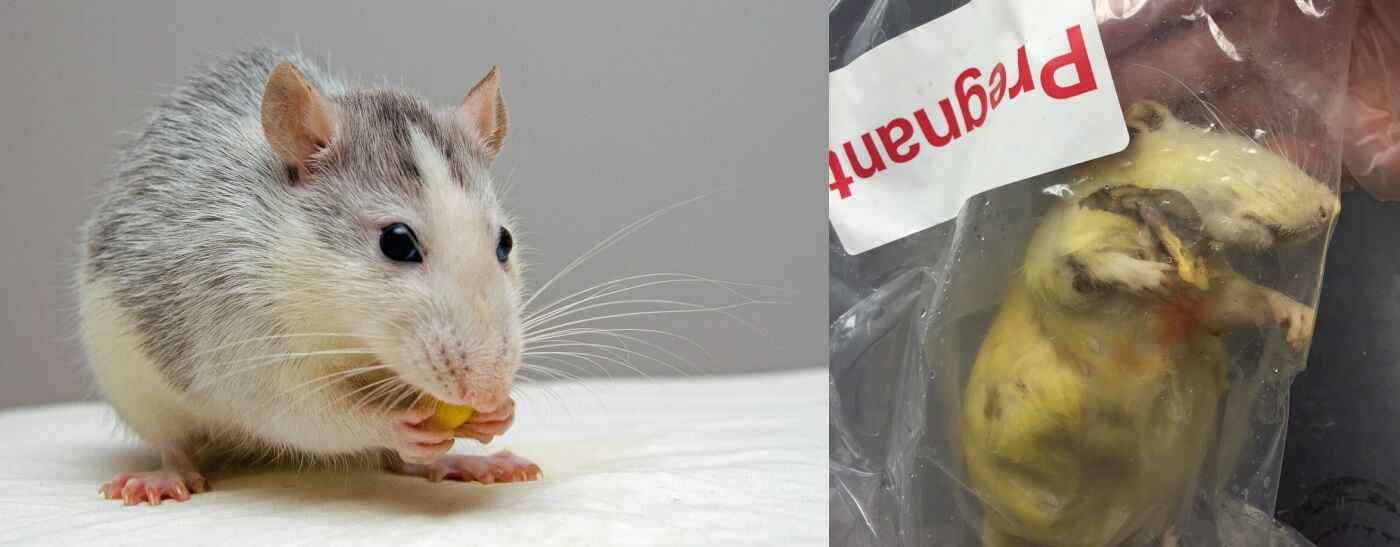
Because medical schools in the U.S. no longer use animals to teach students and incoming students aren’t expected or required to have experience with dissection, using humane alternatives will better prepare those entering medical school. And of course, there is no shortage of images and videos posted on social media of students misbehaving with and disrespecting animal cadavers. Replacing all animal labs in the classroom is a great way to avoid these callous displays.
Here are some ways teachers can help animals:
- Pledge not to use animals in your classroom. Share information with your students and fellow staff members about your decision to use humane alternatives.
- If your school is using animals as teaching “tools,” voice your objections. If you’re comfortable doing so, write a letter to or have an open conversation with the staff members involved. Explain the cruelty inherent in dissecting and experimenting on animals, the many risks involved, and the harmful message that using animals in the classroom sends to students.
- You can even write a letter to your principal and school board asking them to implement a policy banning animal projects in the district. Be sure to include all the pertinent information, and feel free to contact us if you need any assistance.
How Parents and Guardians Can Help End Dissection
Parents and guardians have an important responsibility to ensure that their children are taught using the most effective methods and that educators are incorporating humane education principles into the curriculum. Whether your child is attending in person, distance learning, or homeschooling, you can encourage the use of non-animal science lessons that teach children to value humans and animals, build prosocial behavior, and are consistent with character education initiatives.
 Live Pig Photo: © iStock.com/HadelProductions
Live Pig Photo: © iStock.com/HadelProductionsHere are some ways parents can help animals:
- If your child’s school is using animals as teaching “tools,” voice your objections. Let your child’s teacher and/or principal know that your child will not be participating—especially if the school plans to mail animals’ bodies to remote students to dissect—and urge the school to replace animal dissection with superior, modern alternatives. Explain the cruelty inherent in dissecting and experimenting on animals, the many health risks involved, and the harmful message that using animals in the classroom sends to students.
- Discuss with your child’s teacher and/or principal your view that helping animals should be part of the school’s program to build character in students. Share your knowledge about character education laws and the epidemic of youth violence against animals.
- Let your child’s teacher know about TeachKind, including our willingness to provide free lessons, other resources, and support.
- Urge local school board officials to ban animal dissection. If your state has a dissection-choice law requiring teachers to offer humane alternatives, ensure that your community schools are in compliance.
How Students Can Help End Dissection
Many empowered students are taking a stand against animal dissection before it takes place in their classes, and teachers need to hear from you! Express your deeply held ethical or religious beliefs, and ask them to allow you and your classmates to learn without cruelty by dissecting digitally. Follow this guide to campaign against animal dissection at your school!
Baltimore student Jennifer Watson, who was taken out of an honors class when she asked for an alternative to cat dissection but was allowed back in after a protest prompted officials to reveal that she was entitled to an alternative, explained her actions simply: “I’ve loved animals my whole life. I was standing up for what I believe in.”
Ashley Curtis failed a lab exercise in her Minnesota school when she refused to go to class on the day when dissection was scheduled. She said, “I don’t think any animals should go through any suffering for education.”
Here are some ways students can help animals:
In high school? Use this interactive map to find out what your state’s laws say about dissection—you might have the choice to opt out!
Even if there’s no law in your state requiring that students be given a humane, non-animal alternative, PETA can help you talk to your teacher about getting one. For more information, contact us at [email protected] and visit PETA.org/DissectionKills.
In college? E-mail [email protected] for information on opting out of dissection and taking action against animal experimentation at your school.
Looking for more ways to speak out against dissection and take action for animals? Join PETA’s youth-led movement, Students Opposing Speciesism (SOS)!
